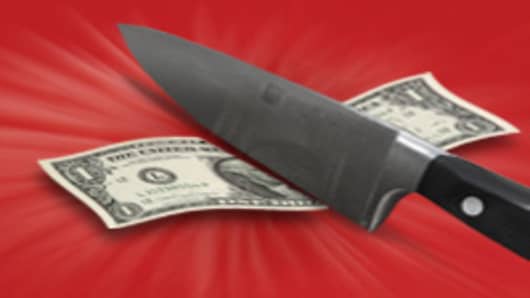Add them all up, and you could trim your annual expenses by hundreds of dollars or more.
Following are five areas where you can cut your bills fast. These tips can help you to weather the current economic downturn and continue to thrive once happier days return.
Energy and gas savings
Energy costs are boiling over. The U.S. Department of Energy estimates Americans will typically spend $2,350 on home energy costs in 2008, up from $2,100 a year ago.
Moreover, households are slated to spend $3,950 on gas for the year, up from $3,000 in 2007.
Fortunately, some relatively cheap fixes are available, and many begin in the home.
For example, weatherstripping, caulking doors or sealing windows can keep out cold and heat, lowering your heating and cooling bills.
_____________________________________
Want to Save More Money? Here Are More Stories from Bankrate.com:
- Fifteen Ways to Save Money on Gas
- Bankrate's Debt Management Calculator
- Thirty-Two Ways to Save on Groceries
_____________________________________
"Every little step helps, and if you can't afford new windows or storm windows, plastic film kits aren't a bad alternative," says Ronnie Kweller, deputy director of communications at the Alliance to Save Energy.
Other tips for cutting home energy costs include:
Installing a programmable thermostat. These handy gadgets let you turn up the heat or air conditioning just before you get home rather than paying to keep your empty dwelling comfy all day. Households that use these thermostats typically save $180 per year, far more than the roughly $100 it costs to purchase the thermostat, according to the Department of Environmental Protection.
Switching to energy-efficient light bulbs. Yes, they do cost more than traditional bulbs, but they wind up saving money because they use two-thirds less energy and can last 10 times longer, Kweller says. That computes to savings of $50 per bulb.
Being efficient. Clean and change furnace air filters and wrap your water heater. These moves help your appliances run more efficiently and cheaply. Seal ducts on air and heating systems to improve efficiency by as much as 20 percent, according to the Alliance to Save Energy.
Lower the water heater temperature to 130 degrees Fahrenheit. That's hot enough to kill germs and safely wash dishes. Do laundry in cold water.
Meanwhile, you can also trim vehicle gas costs with the following steps:
Adopt good driving habits. You'll save a bundle if you stop speeding. If you typically race around at 70 mph instead of 55 mph, you're lowering your vehicle's fuel efficiency by as much as 17 percent, according to the American Council for an Energy-Efficient Economy, or ACEEE.
Next: Two-thirds of purchases at grocery stores are impulse buys...


